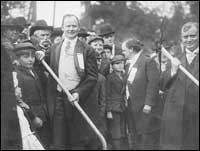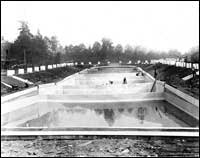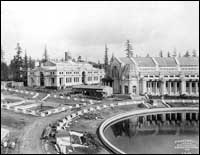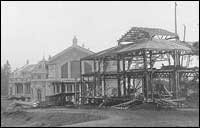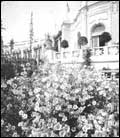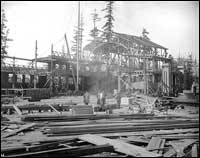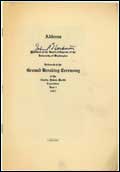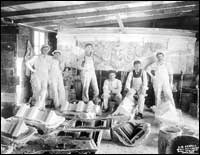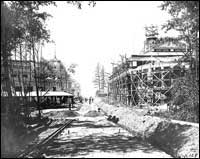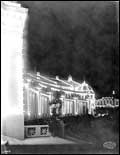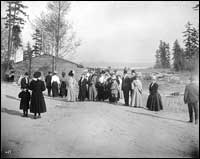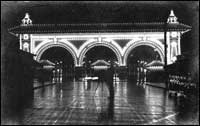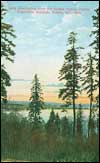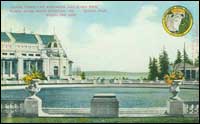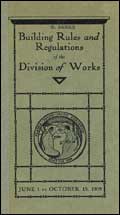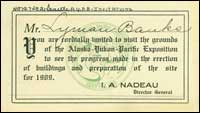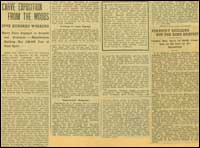|
ConstructionOfficial groundbreaking ceremonies were held on June 1, 1907, two years before the opening day of the fair. Nearly 15,000 people attended the ceremony where speakers proclaimed that the exposition would mark the end of the obscurity of pioneer days and that Washington would take its “proper place among the great states of the republic.” In his photograph of the ground breaking, Frank Nowell captured Exposition president John E. Chilberg about to wield the “golden shovel.” The tremendous task of clearing the 250 acres of grounds began and major buildings began to be erected. The Olmsted Brothers, an eastern firm, was selected as the landscape architect for the Exposition. Their plan opened up the campus by removing the woods to show vistas of the mountains and lakes, and combining water features and plantings to create a spectacular landscape. The Olmsteds affirmed the importance of maintaining some of the original forest on the campus. They noted, “While these trees are not as large as some of the celebrated trees of California . . . they are still very large indeed.” Roses, peonies, foxglove, daisies, phlox, clematis, and rhododendrons were some of the featured plants. Gardeners planted over 300,000 pansies around the central focal point of the Fair, the Geyser Basin. All in all, over one million bedding plants were moved into place during the Fair to add color and brilliance to the landscape throughout the Exposition. Many of the buildings constructed for the AYP were not meant to last. Built of lath and plaster, they were largely meant to be destroyed after the Fair. This type of construction meant plasterers were an important part of the building crew. In spite of the temporary nature of the buildings, the lighting effects at the AYP were spectacular with not only pipes, but all of the wiring being buried. Lighting varied with some lights outlining the profiles of the buildings while others illuminated the buildings from within. Pillars held spheres of bulbs that lit the walkways. Throughout the period of construction, Seattleites visited the grounds to watch the work. Unlike today, visitors entered incomplete buildings with no hard hats or fences in sight. |





